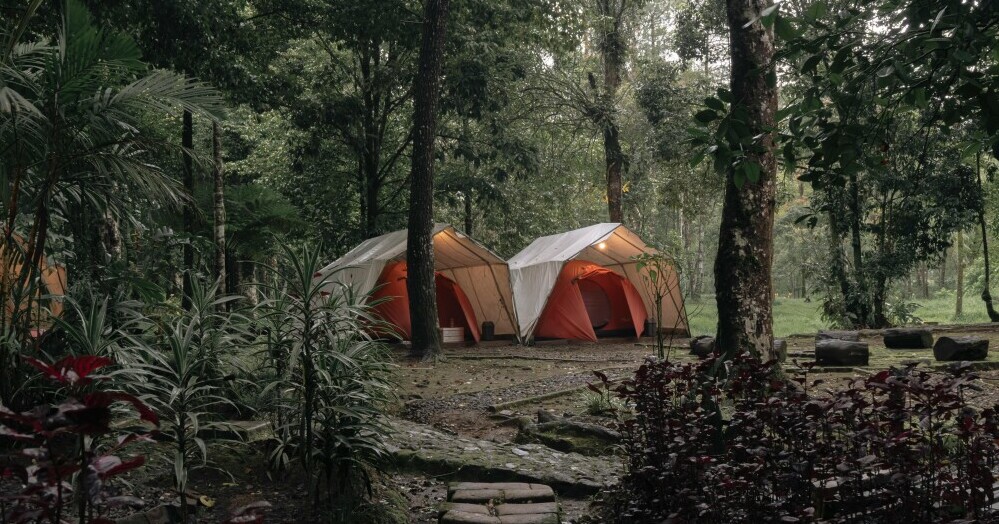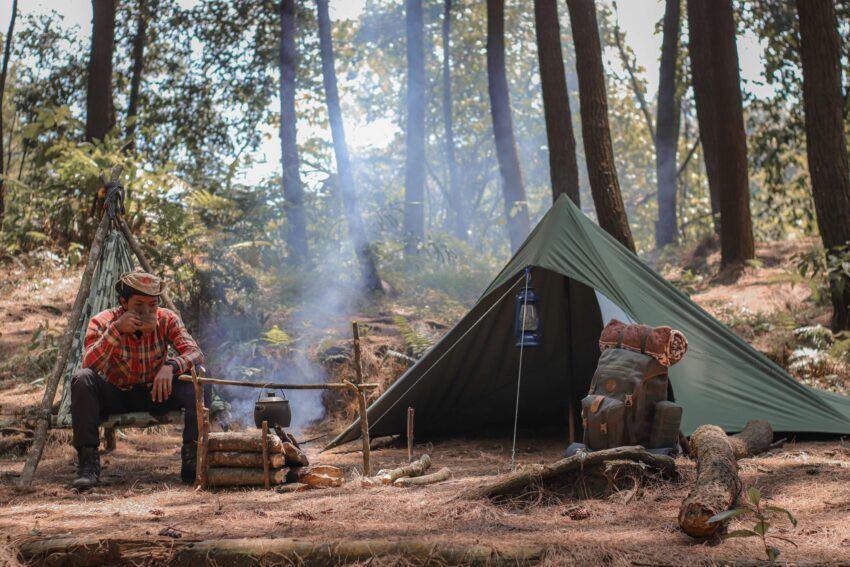Pop-up tents are great for those quick weekend trips. You just throw them in the air, and bingo – you’ve got a place to crash. But if you’re planning a longer adventure, a dome or a proper backpacking tent – ones you can pack down small and relatively light – might be the better pick. Besides, they offer decent wind resistance, which is always a plus out there in the wild.
Big shout out to your tent’s weather resistance. A good, water-resistant hatch is your best buddy when the rain hits. Look for solid seams and think about the weight – nobody needs extra kilos dragging them down. Bonus: Check out the interior space to make sure you aren’t sleeping in a sardine can. Trust me – more room means fewer arguments when sharing!
Some brands have nailed the art of making sturdy yet budget-conscious tents. Consider places like Naturehike or Alps Mountaineering. Pros have experienced more than enough out there, suggesting that it’s not just about the brand but the tent’s reputation among travelers.
Ever heard of folks who do wonders with the simplest gear? Take a gander at their stories. It’s genuinely inspiring how some adventurers have taken basic setups to new heights, wandering through blazing heats to chilly peaks, all because they picked the right gear. It’s like getting a crash course in entering the outdoors without emptying your bank account.
Maximizing Comfort with Affordable Sleeping Gear
 Getting a good night’s rest while camping can make or break your whole outdoor experience, right? It’s not just about staying warm but also staying comfy. Let’s break down your sleep setup without emptying your wallet.
Getting a good night’s rest while camping can make or break your whole outdoor experience, right? It’s not just about staying warm but also staying comfy. Let’s break down your sleep setup without emptying your wallet.
Sleeping bags versus quilts is a common debate for budget adventurers. Opting for a reliable sleeping bag can be super economical and versatile. They’re cozy, usually come with ratings for different temperatures, and can save you a ton of hassle. Quilts, on the other hand, can be a great lightweight alternative if you’re looking to shave off some extra weight and you’re camping in mild conditions.
Now, sleeping pads – can’t ignore these lifesavers! They provide that extra cushion and, importantly, prevent heat loss. Look out for pads with decent insulation (also called R-values). Plus, those with air cells or foam padding can do wonders for comfort without a heavy price tag. Rather sleep on a cloud than the rocky ground? Keep this in mind when browsing for deals.
You’re not packing for the same season throughout the year, obviously. When the temperature drops, you’d want something to trap more heat. Here’s a tip: layering your sleeping gear with thermal liners can amp up that warmth without buying a whole new setup.
Last but not least, maintaining your gear is key. Simple stuff like airing out your sleeping bag and never storing it while compressed can prolong its life. Experts have been known to extend their gear’s use by doing just that, and you’ll spend less over time swapping out your trusty companion.
Pumping life into affordable gear is about being smart and resourceful. Whether it’s a product recommendation or a DIY trick passed down from seasoned campers, the art of outdoor sleeping comfort lies in mixing technology with traditional smarts.
Crafting a Backpack on a Budget: The Essentials
 Having a well-prepped backpack doesn’t mean breaking the bank. It’s about savvy choices that make you ready for anything, from sunrise to sundown. Here are some pointers straight from seasoned wanderers who’ve seen more trails than towns.
Having a well-prepped backpack doesn’t mean breaking the bank. It’s about savvy choices that make you ready for anything, from sunrise to sundown. Here are some pointers straight from seasoned wanderers who’ve seen more trails than towns.
First, let’s talk features: finding a backpack with the right size, a few compartments, and solid durability goes a long way. You don’t want to lug around something that doesn’t sit comfortably on your back or can’t hold everything you need without busting a zipper.
Packing smart is key. Decide between necessities and things you can skip for your campsite. Trust me, you don’t need all that fancy stuff; sometimes the basics get you through the night just fine. A lightweight and compact tent, your sleeping gear, and only the must-have items – that’s your ticket to a hassle-free trek.
When it comes to cooking solutions on a budget, think portable and efficient. Jetboils and one-pot solutions are lifesavers, but a simple lightweight stove or even a homemade alcohol burner can get the job done. Pack utensils that multi-task and always bring along a few seasoning hacks to keep meals exciting, even when they’re simple.
Creating a good camping kitchen doesn’t have to be expensive. You can pack reusable containers for storing leftovers and use biodegradable soap for a quick cleanup, protecting the environment as you go.
Finally, sustainable travel is worth a mention. It’s all about leaving no trace and minimizing impact, meaning your footprint both environmentally and financially can be small if you make thoughtful choices. Reusable gear, minimized waste, and local resupply stops all contribute to sustaining the beauty you’re out there to enjoy.
Doing more with less is the essence of budget travel. It’s not just about saving money; it’s about the freedom to explore the world with a light backpack and an even lighter heart.

